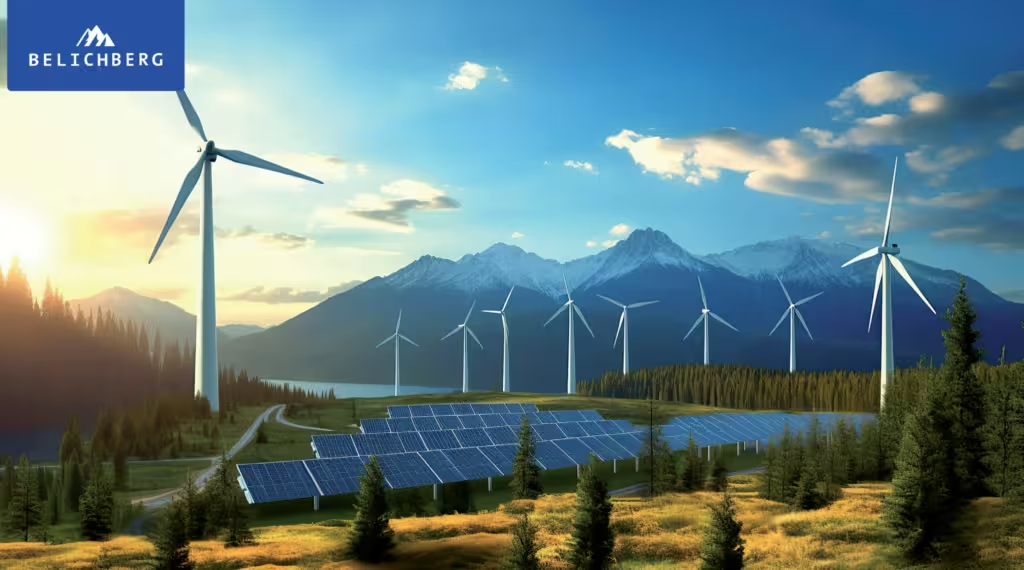Mykola Bubelich's start-up Belichberg focuses on sensor and monitoring systems for PV systems and wind farms.

Mykola Bubelich, a native of Ukraine who grew up in Odessa, moved to Vienna with his family in 2015 and founded the IT start-up Belichberg. Together with a team of ten employees who work across the European Union and Ukraine, he has specialized in software and artificial intelligence for sensor technology in the field of renewable energies - solar and wind power. The name of the start-up itself, a word created from the name of the founder and "mountain", is intended to stand for consistency and stability.
What was your motivation to start your company?
Mykola Bubelich: As a software engineer, I am absolutely convinced that digitalization and software development improve our lives and make us happier. This also applies to the transformation towards renewable energies. That is why we have positioned ourselves in a niche that contributes to improving the use of renewable energies.
One of your business areas is intuitive software for solar parks. What does that entail?
Bubelich: There are a lot of sensors in photovoltaic systems in particular that can be used to increase performance. With solar systems, even a loss of just one percent of output per year is a lot. The energy that is lost in this way could supply hundreds of households. If an existing problem is found early on, a lot can be gained. Even half a percent makes a difference. However, the loss of efficiency in a solar power plant can be as much as 20 percent. We are developing software that detects the reason and location of an energy loss on the way from the solar panel to the feed-in to the grid, making it easier to fix and taking less time. Our products analyze the sources of error in real time. It can increase the efficiency of a PV system by between one and five percent.

Where is there a need for optimization in PV systems?
Bubelich: There are systems where the solar panels align themselves with the sun. In any system that moves, the physical components are the weak points. Our software reports when there is damage and the movement stops. However, the panels that are mainly used are not moving. Solar power plants consist of a large number of individual components, and damage is first noticeable in the reduction in output. In large solar parks, which are often built somewhere in the middle of nowhere, finding the cause of a loss of output can take a lot of time if countless components first have to be checked by a service employee on site. Sources of error include damaged cable connections. Our software now makes it possible to immediately and precisely detect errors in moving as well as static solar panels. An employee therefore knows exactly where damage has occurred and can repair it in a targeted manner. There is no need for lengthy troubleshooting.
IT solutions for wind farms pose different challenges.
Bubelich: We have developed a solution for one of our customers. It involves recording when which technician enters a wind turbine. Wind turbines have to be checked regularly, which is often done by service employees from external companies. The employee registers when entering the turbine and checks out again when leaving; the length of time spent on site is also recorded. Here, the turbines, like large solar parks, are often located away from residential areas. It is in the owner's interest to know who gains access to the wind turbine and when. Our software is therefore an access control system, and every access to the turbine is logged and can therefore be traced.
They also work in the areas of hydropower and geothermal energy.
Bubelich: These are future business areas in which we also want to be active. I definitely see a need there, because both hydroelectric and geothermal power plants use a lot of sensors that can be optimized using our approach. We have a special ability in the area of software and how we can use mathematical models and artificial intelligence. The first step is problem analysis. At the moment, however, we are concentrating on large PV systems and wind turbines.
Another area of your activity is monitoring and alarm systems. How does this fit in with renewable energies?
Bubelich: We have developed a system designed to protect large solar parks from vandalism and theft. The biggest problem is not so much the theft of copper cables themselves, but the damage that results from them. This can shut down a PV system. This damage is caused in just about 15 minutes. Using video surveillance and automated processing of the images, the presence of unauthorized persons on the site is detected and, when the system is fully developed, the local police station is alerted. At present, the authorities are still notified by employees who are informed of an alarm by our system, then manually check the video images and then initiate security measures. This greatly reduces the response time.